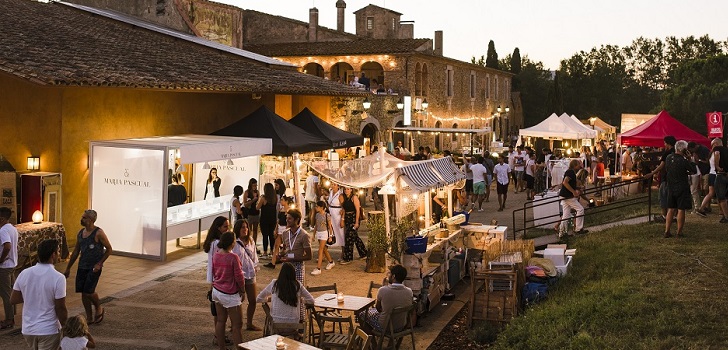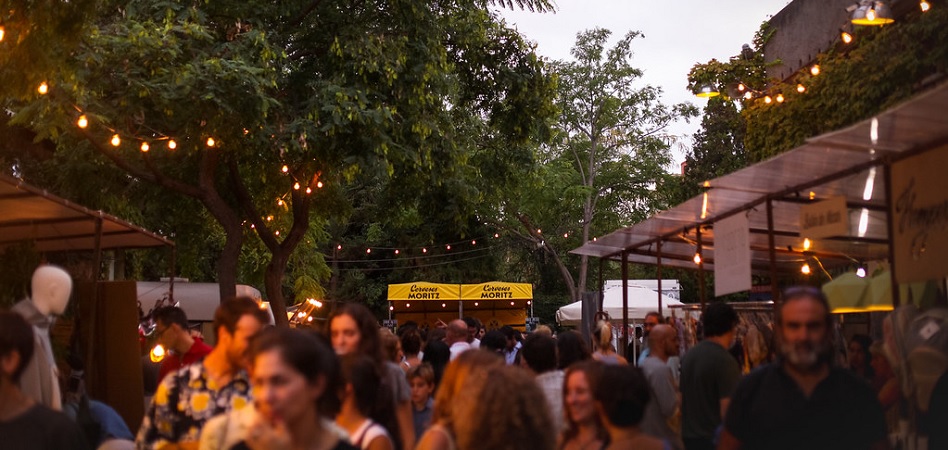The golden era of fashion markets in Spain
Mercado de Diseño, Palo Alto or White Summer gather every year more than 100,000 people and emerging brands are looking for the opportunity to show off their products. Its difficulty? The ability of escalating and the challenge to remain new.

Chill music in the background, a mojito and checking out a new vegan shoe stand. It’s not Coachella, it’s the new concept of the fashion market, that leaves behind the traditional model an embraces a new cool and experimental concept. Spain is one of the countries that It’s experiencing the new concept of the traditional flea market, behind them young and creative people from Madrid and Barcelona. But, how do they work? How much money do they move? Are they profitable for a fashion business?
More than 13.4 million Spanish have purchased clothing items during the last year in a market,with a yearly average expense of 74.7 euros. Still far from the fashion chains but representing a 4.8% of the sector in 2019, according to Kantar.
The concept of markets is as old as trade. There are records that point to exchange sports in the ancient Greece but the concept just as we know it today didn’t develop until the XIV century. One of the oldest in Europe is Los Encantes, in Barcelona.
In the XVIII El Rastro arrived to Madrid and in XIX century Candem Town in London or the flea market of Saint-Ouen in France.
For centuries, Europe has seen traditional markets with second hand items, cheap clothing and food, but during the last couple of years a new player stepped in, the fashion markets. It’s the middle point between traditional markets and pop up stores, with a clean aesthetics and a wide gastronomic and musical offer. Some continue the second-hand concept, like Lost&Found, and some work with professional brands like Palo Alto.
White Summer has become a company that manages two events and one ecommerce platform
The current model has its origins in pop ups like The House, that opened in 2014 and 2015 in Madrid and had offers from emerging brands. “It’s a model that happened in the middle of the crisis, when brands could afford to open stores but they wanted to have a physical channel to sell their products”, explains Paloma Díaz Soloaga, professor at the Universidad Complutense de Madrid.
“This, added to the fact that there were empty spaces and many new brands that were starting to enter the online channel”, continues. Pompeii or Mr Boho are some of the brands that started with this model. Fashion markets are an evolution of the open air concept with a gastronomic offer that improves profitability. The client? From millennials to young families with children that are looking for an alternative way of spending time.
Most of this fashion markets come from personal initiatives that end up being small companies that organize two or three events in Spain.
La Santa estimates that the volume of the fashion markets business in Spain overcomes 7 million euros
Palo Alto in Barcelona was born five years ago as a Project of the entepreneur Tono Errando Mariscal. Now, its Company, Buganvillasomnis, employs more than ten people during the year and more than seventy people during its events. The Company organizes two events in Valencia and Barcelona and its preparing to enter the capital.
El Mercado de Diseño, un Madrid, started in 2013 with Jose Felix García. La Santa, that takes place in the Costa Brava was also started by Julio Rico Badosa, an entrepreneur without any previous experience in the sector.
La Santa will close its fiscal year 2019 with a revenue between 1 and 1.5 million euros and inside the event, its estimated that the sales move around 7.5 million euros, according to the organization.
One of the biggest markets in Spain is White Summer, that happens twice a year in Girona, but during the last couple of years the company has modify its offer to transform it more into a festival than a market. the company will close its fiscal year with a revenue of more than 5.5 million euros and its expecting to arrive at 12 million euros in four years.
Sponsors and refreshments are the main income of the markets
Financing sources
To start running a market requires an investment that is between 150,000 and one million euros, depending on the size and the ambition of the event. The organization company takes care of the structure to guarantee the safety of the stands and a coherent esthetics and the brands pay an amount to rent the space.
In the Mercado de Tapinería, in Valencia, the monthly quote is 395 euros, in the Mercado de Diseño is 300 euros and in Palo Alto is 225 in a 2x2 square meters stand.
To earn profitability, some of the markets have diversifies their financing, some using sponsor or their own refreshments. In Palo Alto, for example, exhibitors only represent 25% of its income.
The rest comes from sponsors and refreshmentsand a smaller quote to the entry that are sold for 3.5 euros. In some of them with a free entry other financing sources are for example parking lots, like in La Santa.

A non-scalable model
Can fashion markets turn into a profitable alternative to malls and the multibrand cannel? No, at least not for now. “It is very niche, it works fine for the first phase of a brandor when its income doesn’t depend 100% in this model”, states Soloaga.
Despite having big flows of people, around 20,000 per weekend in the case of the Mercado de Motores, in Madrid, most of the brands stop going after some years.
Pompeii, one of the brands that started selling in markets, explains that the model was profitable but very difficult to escalate. “It was good at the beginning so clients got to know us, rent was cheap and we could sell 500 pair of shoes in one weekend”states Jaime Garrastazu, one of the founders of the startup.
“But as the demand increased we started winning online presence and it was more profitable for us to continue in ecommerce due to the costs that required to prepare the stand each weekend”, states the entrepreneur.
For brands its only profitable in its initial phase, to ear visibility or when it’s not the founder’s main activity
“To sustain a business only though pop ups is not very realistic, if you want to have a brand that grows in volume markets are more a transition period than a business model”, explained Garrastazu
“It’s a model that has a deadline, at least for fashion, because what attracts is what is new, and that has an end”, states Soloaga.


info@themds.com
Validation policy for comments:
MDS does not perform prior verification for the publication of comments. However, to prevent anonymous comments from affecting the rights of third parties without the ability to reply, all comments require a valid email address, which won’t be visible or shared.
Enter your name and email address to be able to comment on this news: once you click on the link you will find within your verification email, your comment will be published.